Remind Insoles Founder John Makens Talks Foot Health and What Sets Remind Apart From The Rest
We talk a lot about the importance of foot health here at Remind, but who better to tell that story than the man behind the brand, Remind insoles founder, John Makens. With summer approaching fast and all of our favorite activities in sight, I caught up with John to learn a little more about Remind’s origins, to talk the critical role of foot health in our daily lives, explore what sets Remind apart from other insole companies and to get a sneak peak at what’s on the horizon. Dive in!

How did you start the company in the first place—give us a little background. And was it because you felt like something like Remind was missing?
I grew up skateboarding and snowboarding my entire life and I was always playing around with different insoles and needing more support—something with better impact support, cushioning and also arch support because I have pretty high arches. It was always difficult trying to find something for skate shoes and snowboard boots that worked well. Everything was always so painful, especially doing what we do at the level we do it. You just need that extra support. I was always getting foot and body injuries—ankles, knees, back stuff. And I noticed pretty much right away that having good insoles was like a night and day difference. It was completely missing in skate shoes and snowboard boots, so one day the light bulb kind of just came on. That was about 15 years ago, if not more, and I decided to start reaching out and found a medical insole company that could produce them for us and that’s sort of where we started.
I was working with a biomechanical engineer and a biomedical engineer and the product was super legit, and from there we sort of designed and catered it towards skateboarders and snowboarders. I got a bunch of samples and gave them out to all my friends—pro snowboarders, pro skaters—and everybody came back and were just like, “Wow! These are game-changers.” We got great feedback and from there, that’s really how it all started.

So from there, what was your approach to continue making the insoles now that you got the feedback, testimonials, and were somewhat established?
At the time there weren't really any other insole companies [in skateboarding and snowboarding], we were basically the first ones and a few others popped up shortly after. But the whole approach was just designing a product that used premium materials and was engineered for your foot mechanics, so you get the support your body actually needs. Because when you buy a shoe, or a snowboard boot, it just comes with a one-size-fits-all insole that is just flat and pretty low-end. So you’re missing out on what you specifically need, you know? Things like proper alignment, support and all the impact support as well. We came in and were just like, “How do we make the best product we can?" One that can help people upgrade what they already have, while making their shoe fit the way it should, and making their body feel good.
Absolutely. On that subject, what would you say sets Remind apart from other insole brands out there—both stock insole companies that are mass produced and similar insole brands in the space?
First of all, just the shape and the design is a very podiatrist, orthotic approach. They’re designed to support your arch and the bones in your foot to put your foot into a neutral position. So that’s one key thing. The other thing is, we use three to four different layers of materials combined together. It’s pretty much impossible to find one material that can do it all. You know? You sacrifice one thing to get another thing. We have one material that’s for impact absorption, but it can't have another thing. So we have another material that’s moldable, and another that’s for structural support… and so on. We have all these premium materials that we combine together to get everything you need and more. I’d say that’s where we differ a lot from other companies because they just use one material and while it may be good for one thing, it lacks other things.

What are some of your favorite success stories you’ve heard over the years from friends, family, or customers alike? Moments that have made you realize you’re not just making a great product, but genuinely helping folks live a better life?
There’s so many and it’s so rad to hear them. Reviews come in every day on the website from customers. But a few that come to mind are just friends who have had some really serious injuries that they’ve been battling their whole life, like this pebble-in-your-shoe type of thing that just nags at you and knowing that something as simple as switching your insoles can help alleviate and even get rid of that pain is really cool to hear. Chico Brenes, for example, suffered from patellar tendinitis—jumper’s knee—for years and years, and he put our insoles in and it basically went away. I have another buddy who skates who had really bad plantar fasciitis and this hip problem going on and he wears the insoles and both issues went away. He can’t wear any shoes without them now, you know? And my friend Travis had back surgery in a bunch of different places when he was in his twenties, so you can only imagine the pain that comes with that years later, and they’ve helped take a lot of stress and pressure off his joints. It’s cool because it’s not something everyone thinks about and what an amazing benefit it can have.

That’s a perfect transition to my next question, actually. How important is it for people to educate themselves on proper foot health and to know that upgrading your insoles can play such a major role in doing so?
It’s extremely important. I mean, we spend most of our lives on our feet so having that support and the proper footwear can be the difference in a lot of things. Shoe companies are very limited in a lot of ways. And it’s not completely their fault—they have a price point, number one. So they can’t put a ton of extra money into the inner sole. And they also need to cater to everyone, so they have to create an insole that’s just flat and works for everyone. So being able to customize and have that support you need will give you the longevity and performance that you’re searching for.
Remind has a super impressive snow and skate team. How important was building such a solid team of ambassadors?
It was super important, but most of those guys are just friends of mine, so it was sort of as simple as, “Try these and let me know how you like them.” And they were just like, “This is amazing. These work. Let’s do something together.” It wasn’t like we were going out searching for people. It was pretty natural and organic, you know? And they obviously work. The team is just awesome. Everyone is friends and everyone is really close and they back the product. We’re not just paying someone to say it’s good—they truly believe in the product.

Rad. What’s the future looking like? I know there are some new collabs and gear dropping soon, right?
We’ve been working on a new product launch and re-design, basically taking what we have and just upgrading materials and altering little things to make everything better. So, we have a whole new product line coming out this fall. We’re also bringing back our boot-liner, which is super exciting, because when we launched the boot-liner years ago it was a total hit—one of the best products we had. But it sold out and we had to find new sources, so we’ve spent all this time sort of redeveloping that, so that’s exciting to have that coming back out and dropping this fall as well.
What’s your personal go-to Remind insole?
I run them all, it just depends on the shoe and the purpose. I run the Destin in my daily chiller shoes. The Destin is sort of softer and more forgiving; it’s good for people with flatter feet who don’t want much arch support. So that’s just kind of the most friendly insole that we have, I’d say. And the Cush is kind of in the middle. It has some arch support and it has a thicker heel, so that one is good for shoes that you’re trying to take up a little more space and maybe have a wider foot. It works really well in Vans, so I have the Cush in my Vans. The Medic is a little more sturdy and has a more rigid arch, but is still soft and forgiving at the same time. But super supportive. I’ll run those in my vulc shoes—like my soft and flimsy shoes—that don’t really have much support. And the Remedy are our heat-moldable insoles, so I’ll run those in my snowboard boots. They’re all great, you just have to kind of figure out what needs you have and what kind of footwear you’re putting them in.

So they’re truly designed for all walks of life?
For sure, and that’s the nice thing. There’s a range of different features and arch heights that fit everybody’s needs.
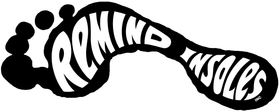

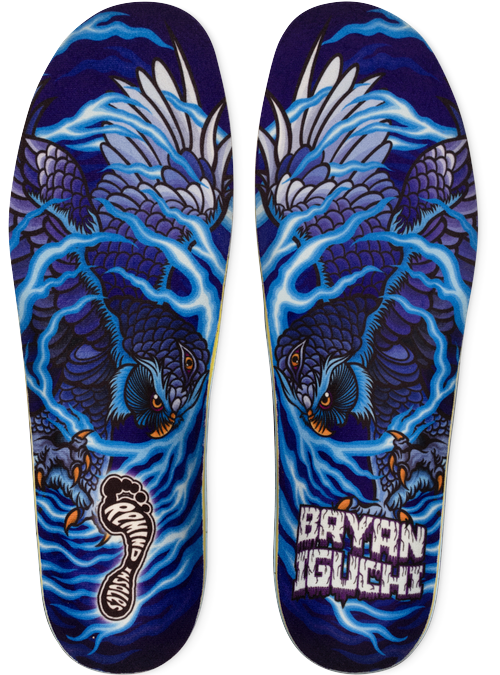
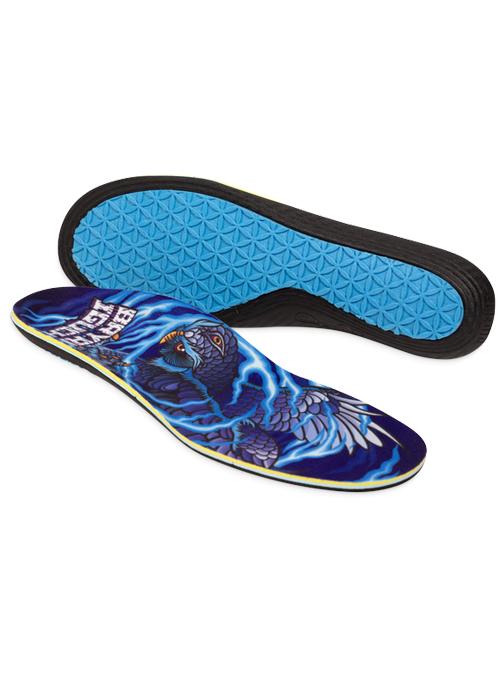
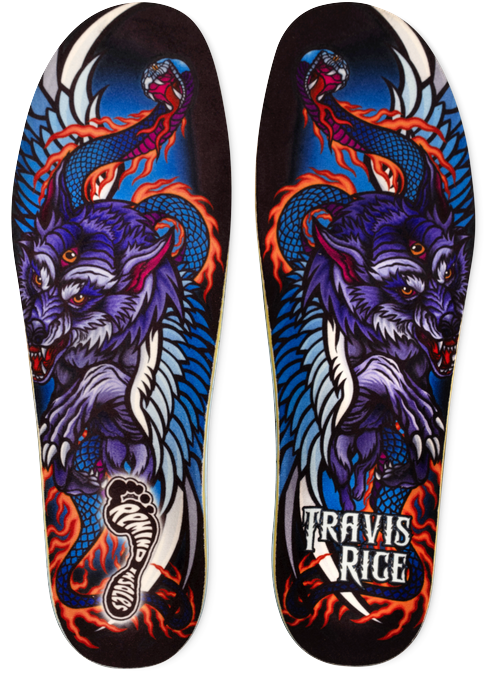
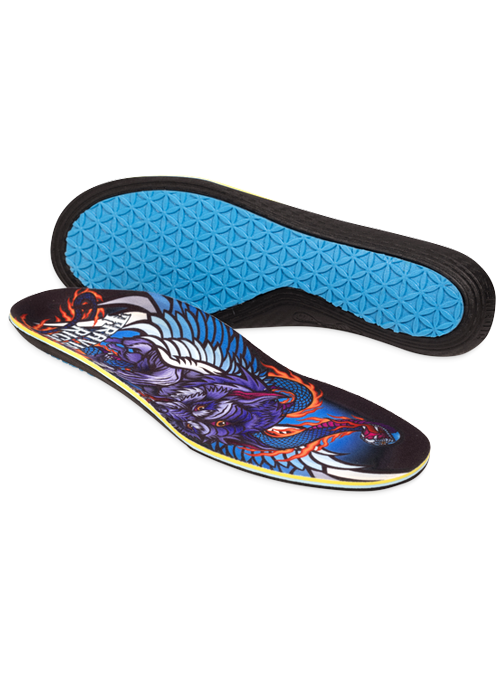


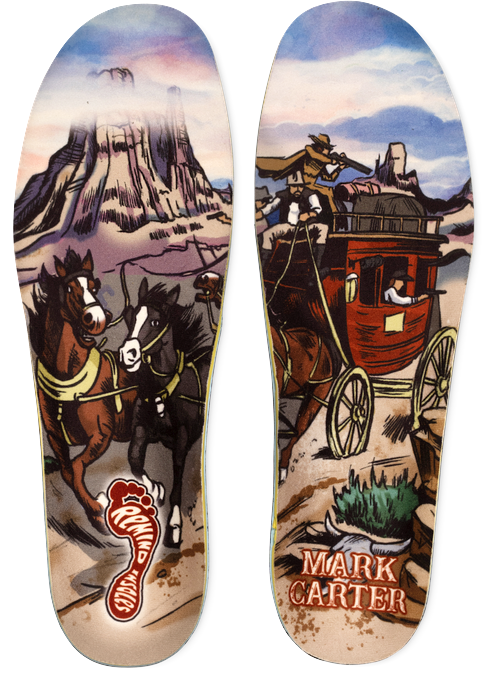
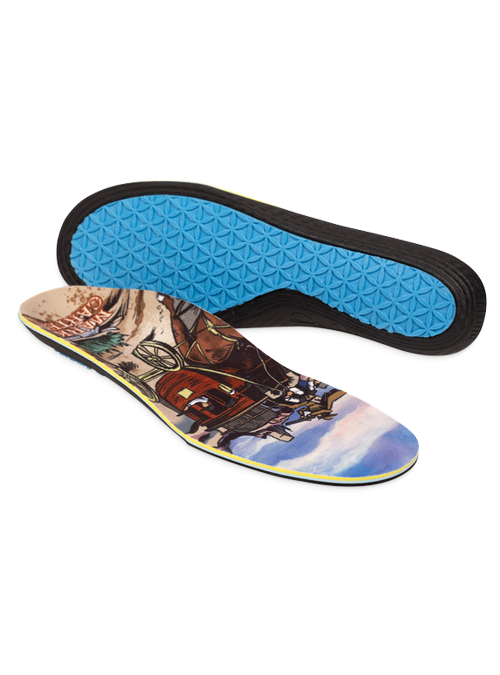





Great interview♠️
Leave a comment